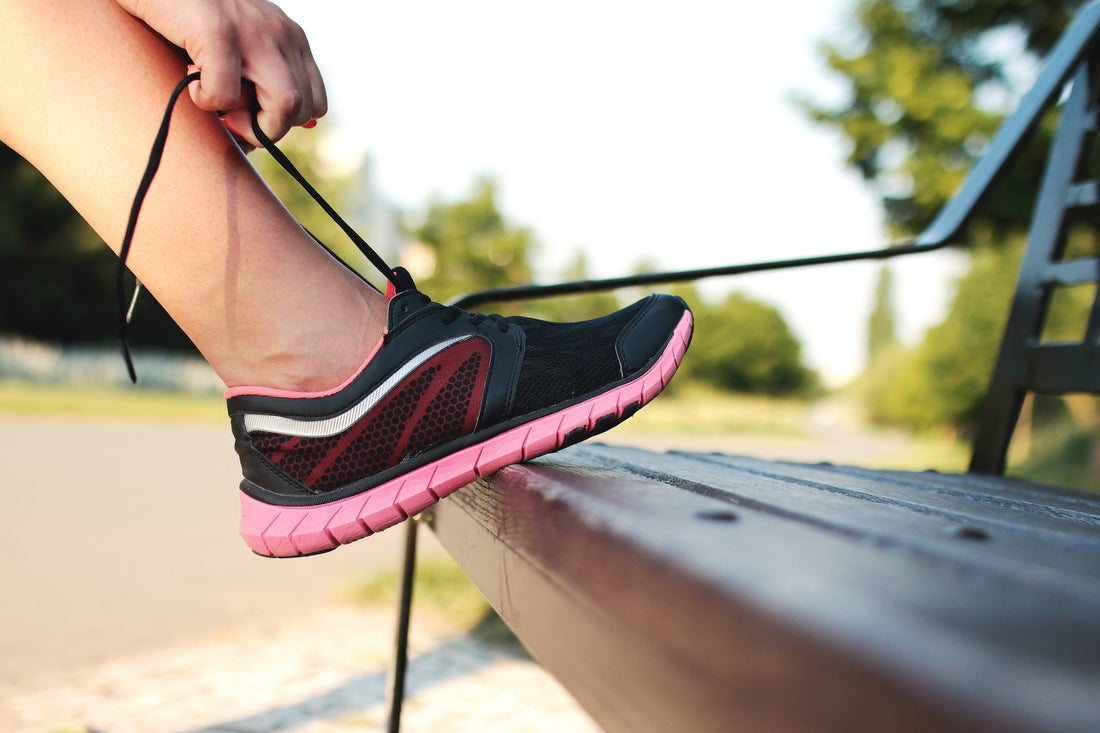
The Anatomy of a Running Shoe: Understanding the Key Components
Share
Running shoes are meticulously designed to provide the comfort, support, and performance necessary for a smooth and enjoyable running experience. Behind their seemingly simple exterior lies a complex combination of carefully engineered components.
Understanding the anatomy of a running shoe can help you make informed decisions when selecting the perfect pair for your running needs. In this blog post, we will explore the key components that make up a running shoe.

Upper
The upper of a running shoe refers to the top part that covers the foot. It is typically constructed from breathable mesh materials that offer ventilation and allow airflow to keep the feet cool during runs. The upper provides a secure fit and helps protect the foot from external elements. Different materials and designs are used to accommodate various foot shapes and running styles.
Heel Counter
The heel counter is the structured component at the back of the shoe that provides stability and support to the heel. It helps prevent excessive movement and keeps the foot in place, reducing the risk of blisters and discomfort. The heel counter can be rigid or have varying degrees of flexibility depending on the type of running shoe.
Midsole
The midsole is the layer between the outsole and the upper of the shoe. It is the key component responsible for cushioning and shock absorption. Most midsoles are made from ethylene-vinyl acetate (EVA) foam, which offers excellent cushioning properties. Some running shoes also incorporate specialized foam technologies like Nike's React foam or Adidas' Boost foam for enhanced energy return and responsiveness.
Outsole
The outsole is the bottom part of the shoe that makes contact with the ground. It is typically made of rubber or durable synthetic materials that provide traction and durability. The outsole features patterns and grooves known as lugs or treads, which help grip different surfaces and provide stability. The design of the outsole can vary depending on the intended terrain, with trail running shoes having more aggressive lugs for better traction on rugged surfaces.
Insole
The insole, also referred to as the sockliner, is the removable cushioned layer inside the shoe. It offers additional comfort and can be replaced with custom orthotics if necessary. The insole helps absorb impact and provides some arch support. Some running shoes come with contoured or molded insoles designed to enhance comfort and promote proper foot alignment.
Toe Box
The toe box refers to the front part of the shoe that accommodates the toes. It should provide ample room for natural toe splay while still offering a secure fit. A spacious toe box is essential to prevent discomfort, blisters, and black toenails, especially during longer runs.
Arch Support
Arch support is a crucial consideration for runners, as it helps distribute pressure evenly and provides stability. Different running shoes offer varying levels of arch support, from neutral shoes with minimal arch support to stability shoes designed for overpronators or motion control shoes for severe overpronation. Understanding your foot type and gait pattern can help determine the right level of arch support for you.

By familiarizing yourself with the anatomy of a running shoe and the role each component plays, you can make more informed decisions when selecting the ideal pair for your running needs. Consider factors such as cushioning, support, fit, and intended use to find a running shoe that suits your running style and preferences.
Remember, finding the right shoe can contribute to a comfortable and enjoyable running experience while minimizing the risk of injuries. We hope this informational post has given you a running start to understanding how to find the perfect shoe to meet all your running shoe needs.
If you'd like to learn more about how to pick the perfect running shoe for you, take a look at our post on 10 Tips for Choosing the Right Running Shoes for Your Feet.
